
Xplor reconnects kids to nature and helps them find adventure in their own backyard. Free to residents of Missouri.
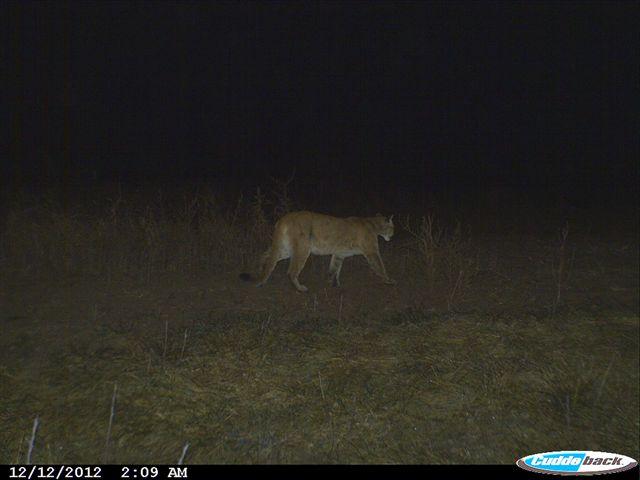



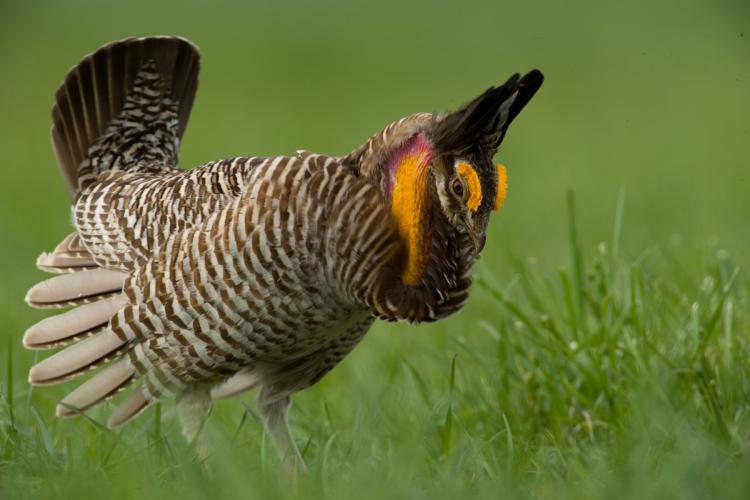
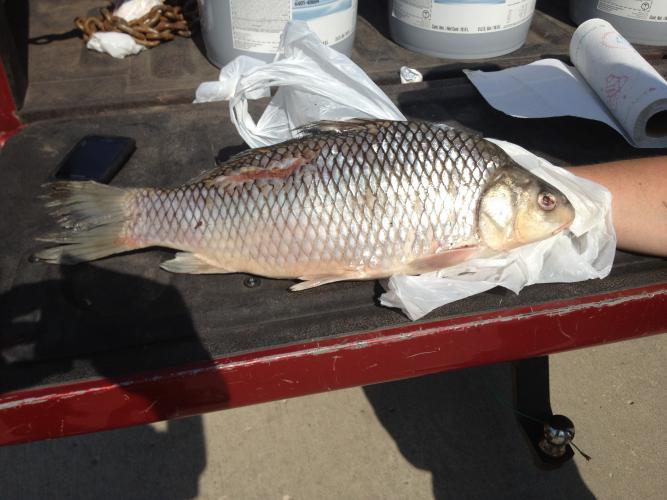
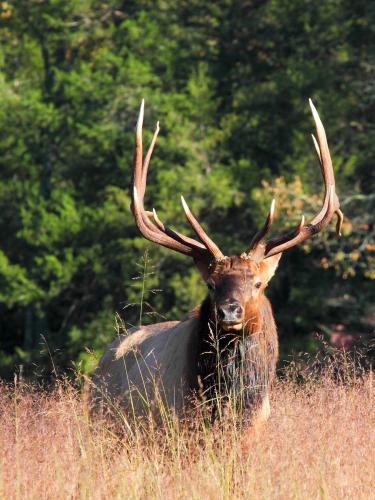


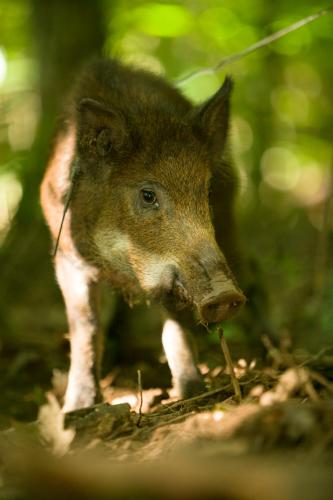



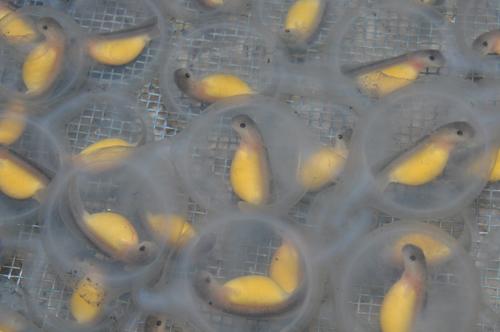


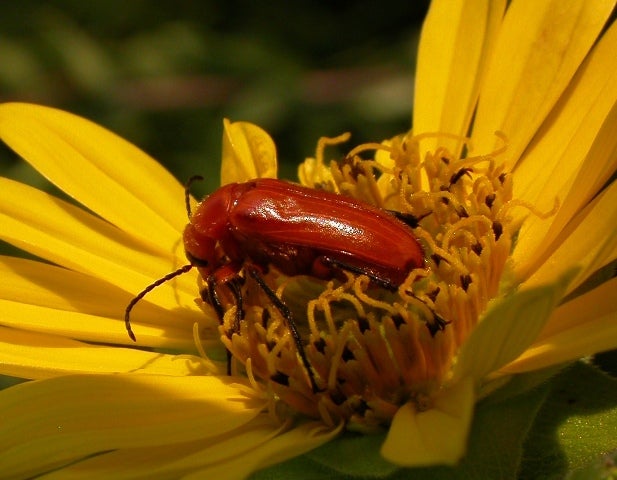


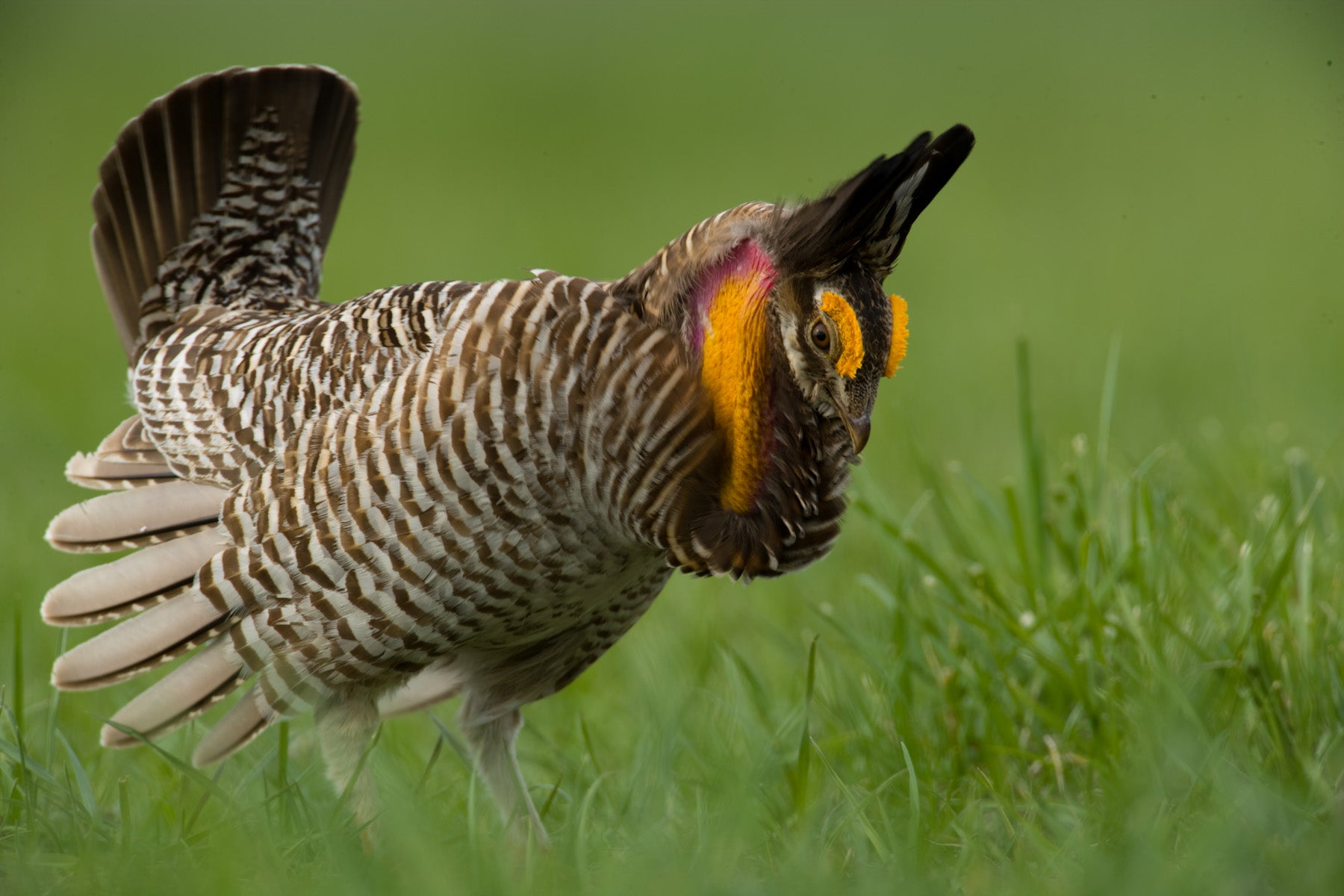




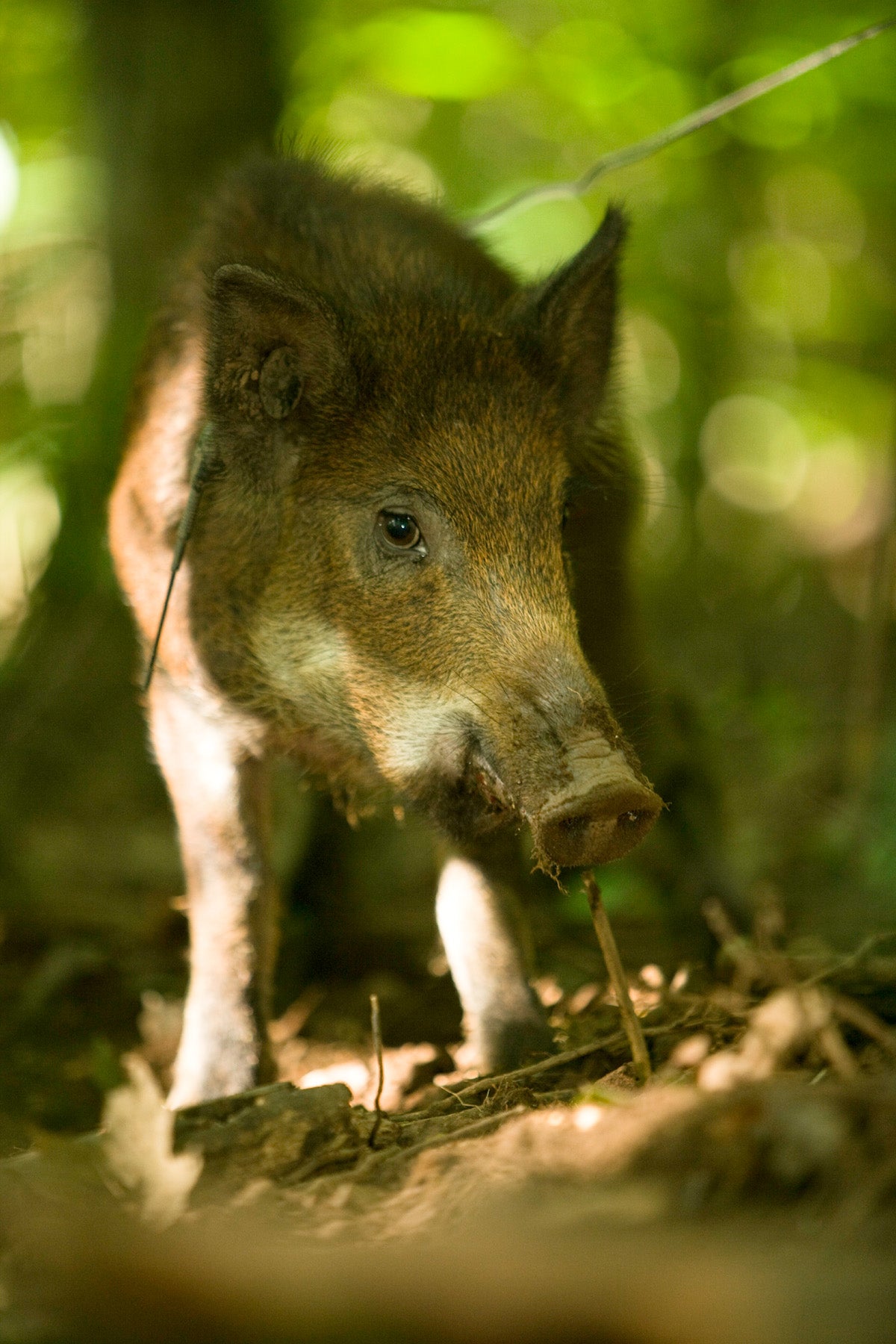

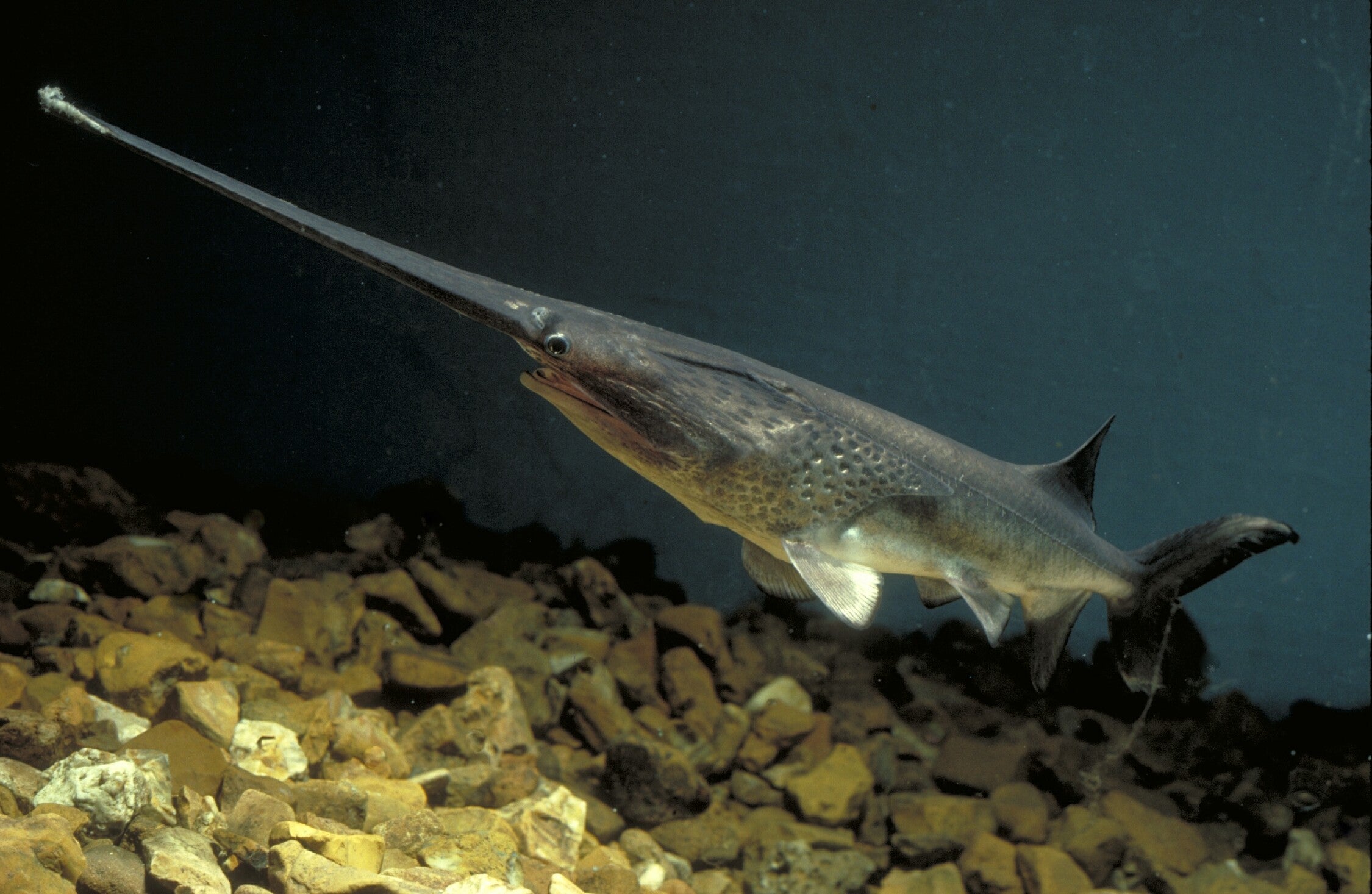

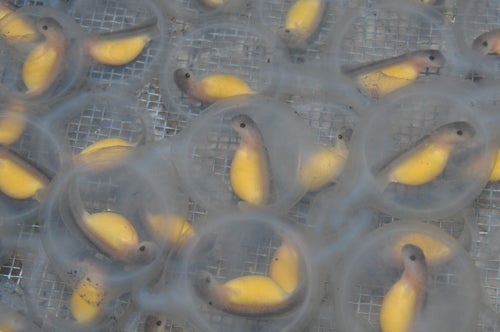

JEFFERSON CITY – 2012 will go down in Missouri’s conservation history as a year when adversity brought people of diverse backgrounds together in common cause. Along the way, they caught some big fish and made progress in restoring some natural treasures.
JANUARY
The year was only a few days old when a Reynolds County man called the Missouri Department of Conservation (MDC) to report that he had captured a mountain lion in a cage-type trap. MDC took DNA samples and released the 122-pound male cougar onto Current River Conservation Area (CA). Later in the month, MDC’s Mountain Lion Response Team (MLRT) confirmed the authenticity of a photograph of a mountain lion taken by a trail camera, also in Reynolds County.
By year’s end, the MLRT confirmed eight more mountain lion sightings, all from trail-camera photos. Several of these sightings occurred in the same areas and around the same times. However, there was no DNA or other evidence that would have enabled MDC to determine if these were repeated sightings of the same cats. For more information about mountain lions in Missouri, visit mdc.mo.gov/node/3505.
Results from tests performed on tissue samples from deer taken in the 2011 firearms deer season showed that two of 1,077 deer tested had chronic wasting disease (CWD). It was the first evidence that CWD had entered Missouri’s wild deer herd. Subsequent testing found three additional positives among 656 free-ranging deer collected in the area around Macon County, where the first two positives turned up.
Missouri took on a magical air as hundreds of snowy owls – the same species featured prominently in the Harry Potter movies – visited the state.
FEBRUARY
Kansas City hosted the National Pheasant Fest and Quail Classic. MDC biologists joined experts from other agencies and private conservation groups in sharing the latest information on managing grassland birds.
With Missouri’s four trout parks preparing for the catch-and-keep fishing season, MDC reminded anglers that porous-soled waders no longer were permitted in the trout parks or other specific trout waters to prevent the spread an invasive algae. MDC has a video with instructions for converting porous-soled waders to a non-porous surface at mdc.mo.gov/node/18453.
The Department invited photographers around the state to enter its 75th Anniversary Photo Contest. More than 20,000 photos were submitted by 2,000-plus photographers. The winning photos were featured in the October 2012 issue of the Missouri Conservationist.
MARCH
In response to the discovery of CWD in free-ranging deer, MDC held open-house meetings in Linn and Macon counties to inform the public about CWD and measures being considered to manage the disease.
The Conservation Federation of Missouri (CFM) named Dave Pace, Salem, its Conservationist of the Year for his involvement in elk restoration and conservation in Missouri and nationally. CFM also honored seven other Missourians for work in various conservation fields.
The National Weather Service (NWS) issued a red-flag warning for much of Missouri, indicating the potential for explosive fire growth.
Recognizing the critical role of private landowners to the success of Missouri’s ongoing elk-restoration effort, MDC held an elk-habitat workshop where landowners from Reynolds, Shannon, and Carter counties met with biologists to discuss management techniques and cost-sharing opportunities.
Missourians set the first records of the year on March 24, when 1,169 young archers fired more than 40,000 arrows during the fourth Missouri National Archery in the Schools (MoNASP) State Tournament.
One year into e-Permits, the system continues to provide an easy and convenient way for citizens to purchase and print hunting and fishing permits from a computer. By year’s end, more than 160,000 hunting and fishing permits were sold with the new system.
Cooperation between MDC, Ameren Missouri, and the World Bird Sanctuary (WBS) gave Missourians a birds-eye view of peregrine falcons raising chicks in a nest box at Ameren’s Sioux Energy Center in St. Louis. A “falcon cam” near the birds’ nest box provided video feeds to the sponsors’ websites and MDC, and WBS staff provided commentary on what was happening.
MDC and Ameren also created a new program, Wires Over Wildlife, to preserve and enhance wildlife habitat on private land under Ameren transmission lines. MDC staff provides technical advice, and Ameren reimburses property owners for wildlife-friendly management practices.
MDC and U.S. Army Corps of Engineers biologists determined that zebra mussels were present in 7,200-acre Smithville Lake north of Kansas City.
David Warren was bowfishing at Duck Creek CA March 23 when he shot an 11-pound, 4-ounce bowfin, setting a new alternative-methods record for the species.
APRIL
MDC advised outdoors people and landowners to be bear aware. Bear encounters spikes at this time of year because bears are hungry when they come out of their winter dormancy and are easily tempted by garbage, pet food and livestock feed in unsecured containers.
MDC certified a tree in Morley as the state-champion black oak. The tree, which stands on land owned by Doug Sikes, stands 75 feet tall, has a circumference of 246 inches and shades an area 105 feet across.
Oscar “Oz” Hawksley, known for teaching thousands of Missourians about the outdoors during a six-decade career, received the title of “Master Conservationist” at a ceremony in Jefferson City. Hawksley, 91, is Missouri’s 59th Master Conservationist. The award is among the highest honors given by the Conservation Commission.
To celebrate Arbor Day, the Department distributed more than 102,000 trees to Missouri 4th graders. The Department continued to work with Joplin to replant trees in areas affected by the devastating tornado. To date, more than 8,000 trees have been replanted with the help of MDC, partners, and citizens.
MDC inducted Engineer/entrepreneur Earl Hoyt Jr. and career conservationist Paul Jeffries into the Missouri Conservation Hall of Fame. Hoyt was a pioneer of compound bows, while Jeffries built government-citizen partnerships to promote conservation. The two collaborated to establish Missouri’s first archery deer season and founded the Missouri Bow Hunters Association.
MDC confirmed the discovery of white-nose syndrome in three bats from two caves in Lincoln County. The disease, caused by a fungus, has killed millions of bats in other states but has not been found to infect humans or other animals.
Young hunters took advantage of warm, dry weather during the youth spring turkey season, checking 4,319 turkeys. That was an increase from the 2011 harvest of 3,898.
MDC wrapped up its five-year program of trapping greater prairie chickens in Kansas and relocating them to Wah’kon-tah Prairie. It will continue monitoring the birds’ progress, using radio collars and leg bands.
Rachel Davis of Climax Springs set a state pole-and-line record for goldeye while fishing from the bank at Lake of the Ozark April 14. The fish weighed 1 pound, 12 ounces.
On April 28, Dylan Gilmore of Perry caught a 9-pound, 2-ounce largemouth bass on a trotline at Ka-Tonka Lake in Ralls County. The fish set a new state record in the alternative-methods category.
That same day, more than 750 students from all over the state participated in the Missouri Trap Shooters Association state tournament in nearby Linn Creek. The Department of Conservation cosponsors the championship and more than 40 staff helped with scoring at the event.
MAY
Hunters checked 40,447 turkeys during Missouri’s regular spring turkey season, up by 2,120 from 38,327 last spring. When combined with the harvest during the youth season, the spring harvest totaled 44,766, up about six percent from 2011.
Nicholas J. Wray of Harrisonville caught his second state-record river carpsucker on May 6, adding an alternative-methods record to his existing pole-and-line record for the species.
Leading experts on safe and skillful hunting gathered in Kansas City May 29 through June 2 for the International Hunter Education Association’s annual convention. Speakers included Missouri Conservation Commission Chairman Don Johnson and MDC Director Robert L. Ziehmer.
Table Rock Lake and Lake Taneycomo are among 10 “Waters to Watch” selected by the National Fish Habitat Partnership. The designation recognizes the importance of strategic conservation partnerships in protecting, restoring and enhancing the two lakes’ condition.
DNA analysis showed that four mountain lions seen in Missouri last year came from three Western states, illustrating the species’ capacity for long-distance travel. All four big cats were seen in Missouri in 2011. Two of the cats documented in Missouri were from the Black Hills of South Dakota. Another matched DNA from Montana mountain lions, while the fourth was related to Colorado cougars.
Missouri’s elk herd doubled in size on May 19, with the arrival of the Show-Me State’s second batch of wild elk from Kentucky. Within an hour, Missouri’s newest four-legged residents were resting in the shade and grazing on lush clover.
Observers atop Kansas City’s 30-story Commerce Tower thrilled to the aerobatics of a pair of peregrine falcons nesting in a box provided for them by MDC and NAI Capital Realty, which manages the building.
Eighteen-year-old Cody Chaney of Belton caught a new state-record river carpsucker May 27 when he caught a 5-pound, 8-ounce specimen with archery tackle. The catch broke a record set a mere three weeks earlier.
JUNE
MDC worked with the U.S. Fish and Wildlife Service (FWS), The Nature Conservancy (TNC), and the St. Louis Zoo to reintroduce the American burying beetle at Wah’kon-tah Prairie. The large, visually striking insects have some of the most elaborate social and behavioral adaptations in the insect world. They bury dead animals to provide food for their young.
MDC recognized the City of Neosho for its conservation efforts. The city did habitat-improvement work at Morse Park, conducted an Ozark Cavefish recharge delineation survey, developed a forestry stewardship plan for the city and an urban deer survey, and held a Hickory Creek “trout opener” event to promote urban fishing opportunities.
MDC held an open house in Macon County to provide information on five recently found cases of CWD in free-ranging deer in the area, explain disease-management actions, answer questions, and provide information on managing private land for deer.
Common carp at Blue Springs Lake in Jackson County became some of the first wildlife casualties of a record heat wave and drought. The kill was estimated at 10,000 fish.
Late in June, MDC issued a ban on open fires on conservation areas. The ban was an effort to prevent wildfires under extremely dry conditions. The USDA Forest Service and numerous counties and communities also issued fire bans.
JULY
July 2 was the 75th anniversary of the Missouri Conservation Commission’s first meeting. The historic event was the culmination of tireless work by the Restoration and Conservation Federation of Missouri, the precursor of today’s Conservation Federation of Missouri.
Foresters confirmed the discovery of the emerald ash borer, a destructive forest pest, near Parkville and in Reynolds County.
The annual North American Duck Breeding Population Survey showed another increase in duck numbers and projected an extremely strong fall flight.
MDC dedicated the new Central Regional Office and Conservation Research Center to E. Sydney Stephens, a conservation pioneer who played a critical role in the formation of the Conservation Commission 75 years ago.
Black-bear monitoring continued, as MDC biologists captured and radio-collared bears to learn more about their numbers and habits in Missouri. Forty-five bears currently are being tracked year-round.
AUGUST
Everything from trees to fish felt the pinch of heat and drought this summer. The period from January through June was the hottest on record nationally. June was the sixth-driest on record in Missouri. The Show-Me State’s last rainfall of statewide significance fell on May 7. One-hundred-degree-plus temperatures began in June and lingered into August.
One-hundred-eighty fire departments around the state received checks for up to $3,000 each from MDC to help with the purchase of personal protective gear and firefighting equipment. The Department assigned more than $60 million in equipment to volunteer fire departments to help fight wildfires.
MDC normally sends crews to help fight fires in the western United States, but this year the agency’s entire force of 754 firefighters stayed home, responding to calls for help from local fire departments. Hummingbirds began flying south early to find more abundant food.
On the positive side, low water levels allowed maintenance work on boat ramps and other areas that normally are too wet. Lack of moisture also permitted habitat work in areas where soil normally remains saturated throughout the summer.
Warm, dry weather early in the nesting season gave bobwhite quail and other upland birds a much-needed break from the wet, cold weather that has plagued them in recent years.
MDC offered free deer-management workshops in August and September to help landowners, hunters, and others manage private land for deer.
MDC also hosted blue catfish open-house meetings to get anglers’ advice about managing blue catfish at Truman Reservoir and Lake of the Ozarks. Events in Camdenton, Clinton, and Warsaw allowed participants to ask questions of MDC staff and express their ideas about potential changes to catfishing regulations.
One-hundred fifty hearing-impaired campers and 70 volunteers got better acquainted with nature at the 11th annual MDC Discover Nature Families Outdoor Skills Camp for the Hearing Impaired at the H. Roe Bartle Scout Reservation in St. Clair County.
MDC rolled out a new high-tech helper for locating fishing spots: the “Find MO Fish” mobile application for smartphones, tablets, and other mobile communication devices. Download the application for iOS devices at tinyurl.com/brma6ef, or Android devices at tinyurl.com/csxgglc.
MDC worked to eliminate feral hogs from land it manages. Anyone spotting feral hogs can contact an MDC office or conservation agent.
Drought improved fish populations in some deeper ponds and lakes. Low water can force prey fish into deeper water, where predators such as largemouth bass have an easier time catching them and are able to grow rapidly. The remaining prey fish, such as bluegills, also grow better, thanks to reduced competition for food.
A rare albino ruby-throated hummingbird visited a feeder at Lake Waukomis north of Kansas City. Birdwatchers Nancy and Michael Morrison spotted the white hummingbird with a pink beak, pink legs, and pink eyes hovering at a feeder in their yard.
The remnants of Tropical Storm Isaac dropped enough rain across much of Missouri to justify MDC lifting the fire ban on conservation areas, but drought conditions persisted.
MDC and the National Wild Turkey Federation offered a free workshop to help private landowners improve wildlife habitat on their property.
MDC says trees that drop their leaves or turn brown aren’t necessarily dead and offered advice about how to tell if a tree is alive and how to help survivors. Some trees drop their leaves to reduce water loss and can recover with supplemental watering and mulching.
Reports of dead deer in ponds began to accumulate, providing evidence that the drought was increasing losses to hemorrhagic diseases. MDC staff kept a county-by-county tally of the reports to identify areas most affected.
MDC and Ducks Unlimited (DU) hosted four 75th Anniversary Celebration and Wetlands Fun Days at MDC wetlands to recognize progress on their shared mission of conserving migratory birds and other wetland-dependent wildlife.
SEPTEMBER
Jennifer Battson took over as chief of MDC’s Wildlife Division on Sept. 1. Growing up on and around farms in Osage County helped form her ambition to work with nature. Battson’s immediate goals include devising strategies for improving the division’s ability to conserve and restore wildlife habitat and game and non-game wildlife species for public benefit.
Visitors to Peck Ranch CA enjoyed the sight of Missouri’s growing elk herd along a self-guided driving tour. The sound of bull elk bugling filled the hollows as the mature males gathered cow elk into small groups called harems.
OCTOBER
MDC held another series of open-house meetings, this time focusing on potential changes in paddlefish management.
Shooting ranges at the Apple Creek CA in Cape Girardeau County reopened following upgrades. The unstaffed shooting range is one of 70 managed by MDC. Jay Henges Shooting Range near High Hill received a four-star rating for new features and improvements, extended hours, and increased staff.
Burr Oak Woods Conservation Nature Center in Blue Springs celebrated its 30th anniversary. It was MDC’s first urban nature center and now hosts 80,000 visitors annually.
Autumn rains were sparse but adequate to salvage the display of fall color.
MDC’s annual turkey brood survey showed a poult-to-hen ratio of 1.7 poults, the same as in 2011. These two years of strong turkey nest success were the best in several years.
Improved turkey reproduction contributed to the second increase in a row of the fall firearms turkey harvest. Hunters checked 8,498 turkeys during the month-long season, topping last year’s figure by 1,421.
The urban deer season harvest (1,108 deer checked) also was up, nearly doubling the 2011 figure and topping the 10-year average.
To slow the spread of CWD, the Conservation Commission authorized 80 landowners with five or more acres in and around a one-mile radius of where CWD was detected to take up to five additional deer during the fall hunting season. Deer harvested using the seals were checked using the Telecheck system, and a tissue sample was taken for CWD testing.
The Conservation Commission accepted accolades from Gov. Jeremiah “Jay” Nixon and State Rep. Sue Entlicher, Bolivar. Nixon and Entlicher each presented a framed proclamation congratulating the Conservation Department for 75 years of conservation leadership.
Missouri Stream Team’s annual report showed a growth of 196 citizen-led stream conservation teams. Stream Teams logged more than 202,900 hours of volunteer time, removed 573 tons of trash from streams, conducted 948 water quality monitoring trips, planted 17,759 trees, and completed 93 habitat improvement projects.
NOVEMBER
The St. Louis Zoo announced that eight female Ozark hellbenders laid 2,809 fertile eggs in the zoo’s artificial nest boxes, and the zoo had produced hundreds of larvae. This marked only the second time endangered Ozark hellbenders had been bred in captivity.
The zoo also honored MDC Herpetologist Jeff Briggler with the 2012 St. Louis Zoo Conservation Award for his work with Missouri’s amphibians and reptiles.
Hunters age 6 through 15 checked 19,277 deer during the first weekend of Missouri’s youth deer hunt Nov. 3 and 4. The youth hunt, started in 2001, is one facet of MDC’s effort to recruit new hunters. In 2001, Missouri had approximately 40,000 deer hunters under age 16. Today, they number approximately 70,000. Missouri leads the nation in hunter recruitment.
MDC announced an expansion of its Discover Nature Schools (DNS) program, allowing participants in science fairs to gain added recognition for their work. To learn more, visit mdc.mo.gov/node/19569.
Hunters shot 204,668 deer during the November portion of Missouri’s firearms deer season, topping the past four years’ harvests. Deer hunting contributes approximately $1.1 billion annually to the state and local economies and supports more than 12,000 jobs in Missouri.
DECEMBER
A limited number of bronze renderings of the “Missouri Monarch,” the massive, world-record non-typical white-tailed deer, went on sale, thanks to collaboration between renowned wildlife artist Glenn Chambers and the Conservation Federation of Missouri (CFM). The 10-inch castings captured the deer’s massive, 333 7/8-inch antlers in minute detail. A maximum of 75 will be produced and sold for $1,500 each. Proceeds will benefit CFM programs, such as Share the Harvest, Operation Game Thief, and the Conservation Leadership Corps. For details, call 573-634-2322 or visit confedmo.org.
Hunters checked 15,136 deer during Missouri’s antlerless deer season, a 5-percent increase from last year. The antlerless season gives hunters and landowners a way of regulating local deer numbers.
Starting December 1, 2012, the Department offered financial incentives to landowners wishing to enroll land into the federal Conservation Reserve Program (CRP). MDC also offered incentives to assist existing CRP contract holders with implementing mid-contract management activities in 53 counties across Missouri to improve CRP grasslands for small game such as quail and rabbits. More information is available from local MDC private land conservationists (PLCs). To find your PLC, click on the “Local Contact” box at mdc.mo.gov.
The Conservation Commission approved accepting land donations of 48 acres from the estate of Kathleen C. Lance as an addition to the Nodaway Valley Conservation Area in Andrew County and 241 acres from the estate of Robert C. Paillard as an addition to the Amidon Memorial Conservation Area in Bollinger County. Missourians have generously donated land to the Department for habitat management, natural community restoration, and for citizens to use and enjoy.
MDC learned that St. Louis will host the World National Archery in the Schools Program Tournament in June 2013.
-Jim Low-